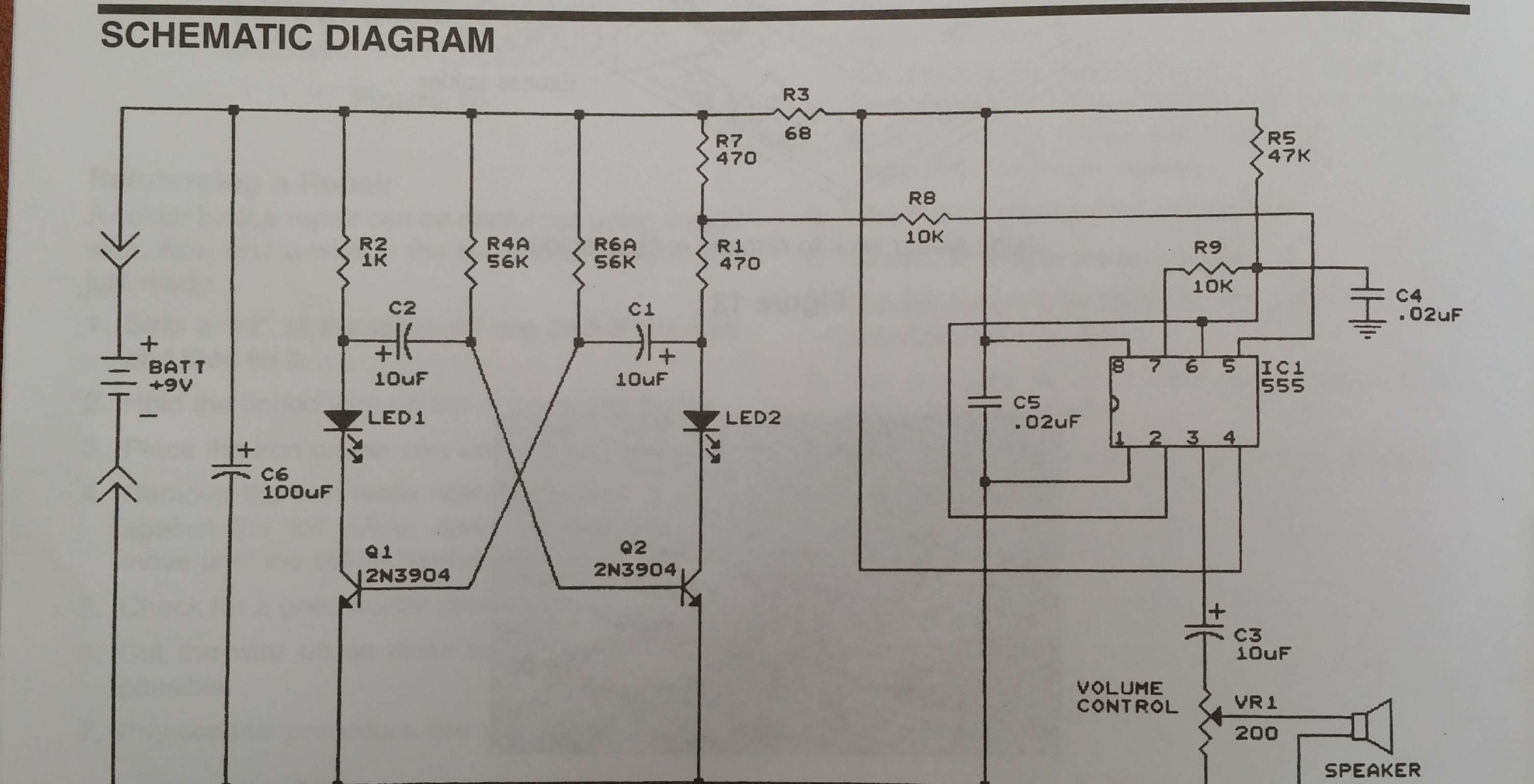
The first oscillator is made up of two transistors Q1 and Q2, resistors R1,R2,R4,R6 and R7, and capacitors C1 and C2. This circuit is called a multivibrator circuit that produces a 1 Hz signal. When voltage is applied to this circuit, one transistor conducts current while the other is off. If Q1 conducts first (which one is first is arbitrary and it usually depends on individual variation between components), it conducts until it saturates. At this point Q2 turns on and Q1 turns off. This process repeats, producing a square wave. The frequency is determined by the time constants of R6 and C1 (or R4 and C2, which are equivalent values). LED diodes are placed in the each of the current paths that light up showing which path is conducting. R2, R1 and R7 determine the current value.
IC1 is an 555 timer IC, which can be wired to act like an oscillator. The frequency of oscillation is determined by R5, R9 and C4. Capacitor C3 couples the output of operations of IC1 via resistor R8. This changes the operations of IC1 during one half cycle of the multivibrator causing the frequency to change from 1500Hz to 2200Hz, giving a speaker output that varies constantly in pitch.
